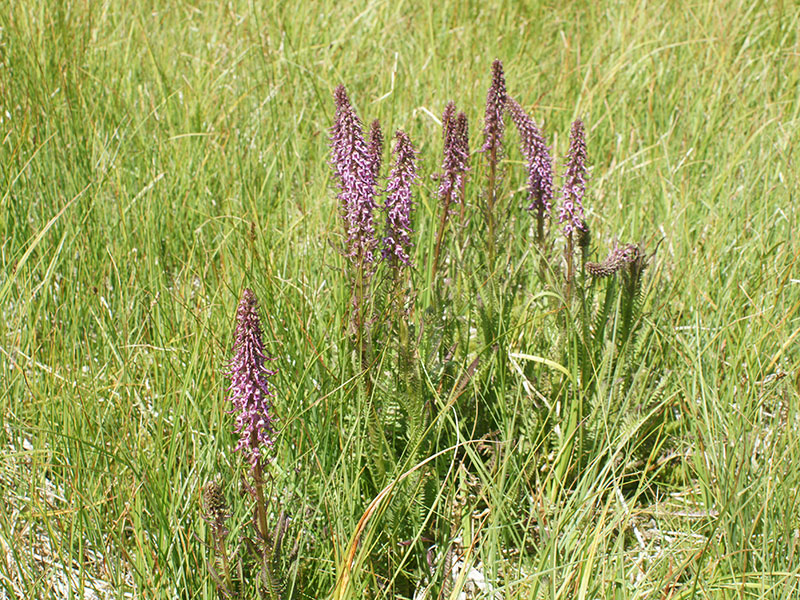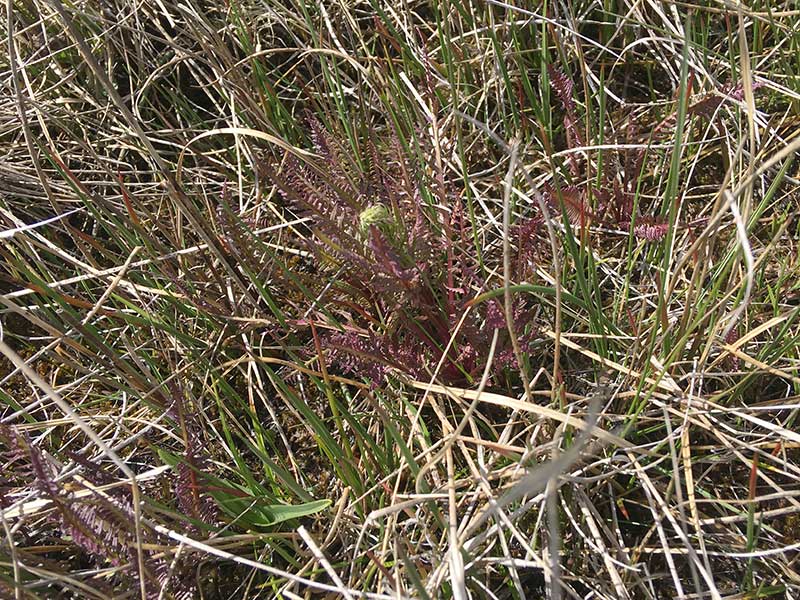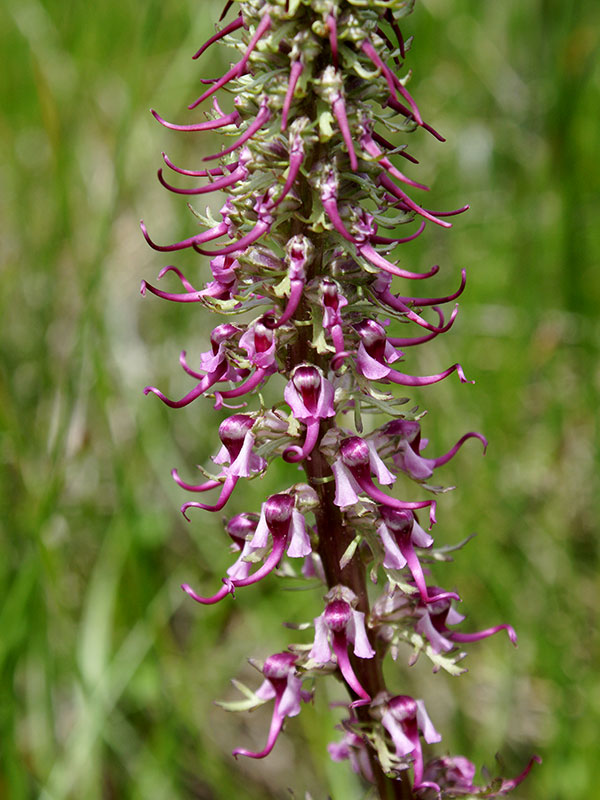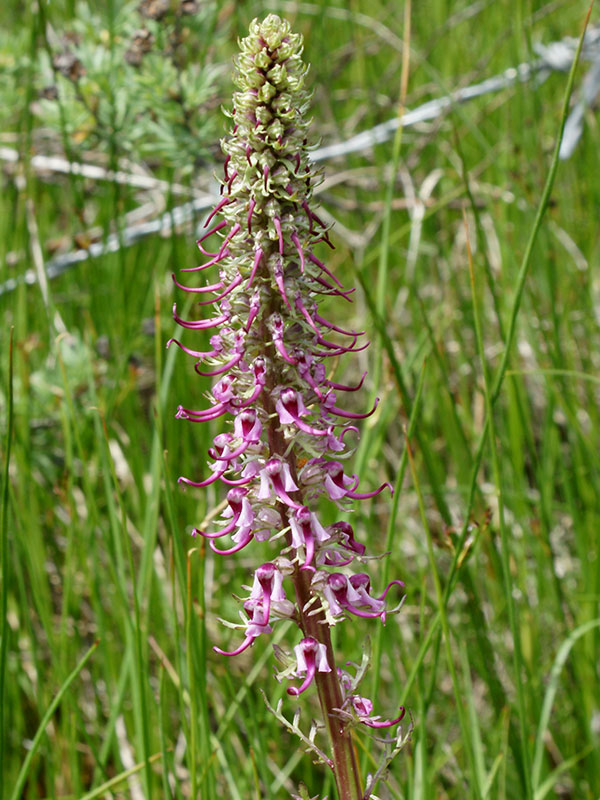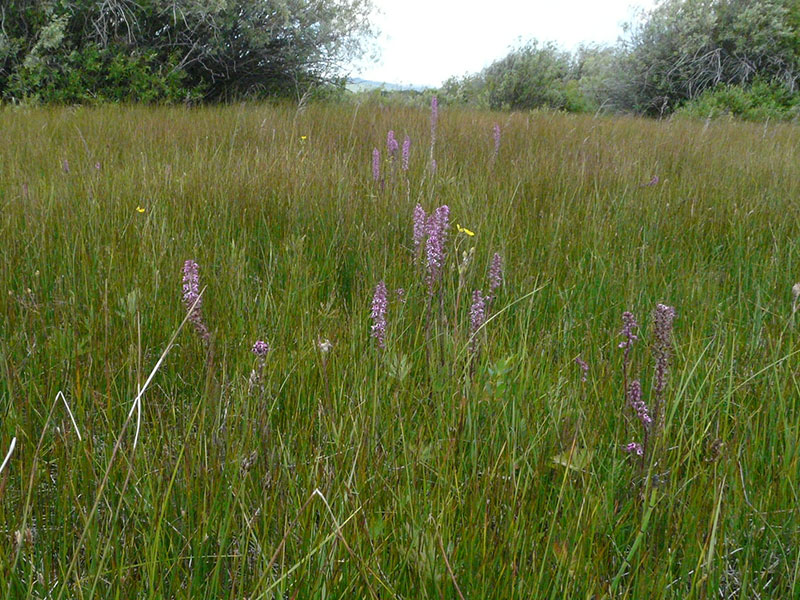Pedicularis groenlandica / elephant head
- flowers range from pink to purple or white
- flowers each have a long, pointed, upward curving beak like an elephant’s trunk and lateral lobes that look like elephant’s ears
- sharply-toothed fernlike leaves
- wet environments in late June, early July
Also known as: elephant head lousewort
Synonym: Elephantella groenlandica
This is a very cool plant in so many ways. Start with the inflorescence, a tall spike covered with small pink flowers. Or the sharp, pointed fern-like leaves around the thick stem base. The flowers themselves have a long beak, like an elephant’s trunk, and two lateral lobes like elephant ears. Going by the “doctrine of signatures” that says that various plant attributes show botanists what their use might be (I’m not sure what kind of botanist, specifically), I take this to mean that P. groenlandica either attracts or repels elephants. The latter would explain why we have no elephants in the Valley, I suppose.
Elephant head is found only in wetlands where it is a perennial. These can be the fens along the Teton River, or “seeps” (wetlands on hillsides where water seeps out), or sedge meadows dominated by Carex spp. and grasses. I find it interesting that some of these wetlands are actually grazed once they dry out a bit and the visible inflorescences are gone. And, some are cut for hay.
For some reason, I like the name “lousewort”. Historically, various lousewort species were considered to either (1) give lice to cattle and people, or (2) cure cattle and people of lice. Take your pick. Like other louseworts and related species in the family Orobranchaceae, elephant head is a root parasite, obtaining its nutrients from some host plant. Because the leaves are green, and presumably photosynthetic, I suspect it is more likely hemiparasitic rather than a full-fledged parasite.
| Color | |
|---|---|
| Family | |
| Blossom size | |
| Inflorescence size | |
| Inflorescence type | |
| When? | |
| Where? |
